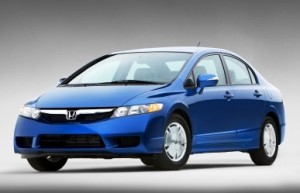Good new or bad, it depends on whether you’re making or selling a car, but one thing indisputable is that the price of the typical new car, truck and crossover has been rising fast this year.
Motorists, used to finding great deals during a long and deep recession, will likely be surprised to see vehicles not just costing more than a year ago, but in some cases several thousand dollars more than just a few months ago, based on industry tracking data.
The biggest and most immediate factor is the vehicle shortage created by the natural disaster that struck Japan on March 11. But makers are also beginning to pass on some of the higher costs they are paying for essential commodities and – in some cases, simply betting that an improving U.S. automotive market will allow them to reduce incentives and raise prices.
“The current environment will set the industry up for very strong pricing,” said Rod Lache, auto analyst with Deutsche Bank. In April, he estimated, U.S. automakers were already getting from $700 to $1,000 more than they did the year before.
The makers will take the extra money any way they can, though they have generally held back on outright price increases. Toyota, for example, put in place a relatively modest hike, at the beginning of May, running to just over 2%. But according to data from TrueCar.com, some of the maker’s models, such as the Prius, are delivering Average Transaction Prices, or ATPs, of as much as $3,000 more than what they went for at just the beginning of 2011.
Part of that reflects a cutback in incentives. With supplies of many models cut short because of reduced Japanese production, there’s simply no reason to be piling on cash givebacks in order to get buyers back into showrooms, according to TrueCar analyst Chintan Talati. Meanwhile, many dealers are using the shortage as an opportunity to squeeze customers for higher prices – sometimes demanding more than sticker – if for no other reason than to make up for the profits they expect to lose while their inventories are down.
Domestic and European makers are also trimming back incentives since it’s less difficult for them to keep up with their traditionally tough Japanese competition. That’s particularly good news for makers like General Motors, which invested heavily in first-quarter givebacks hoping to provide a solid launch for 2011 models like the new Chevrolet Cruze – which goes up against such tough contenders as the Toyota Corolla and Honda Civic, both now in short supply.
The tracking firm Edmunds reported a $1,615 jump in the ATP for the Civic between February and April, a surprise considering the maker was getting ready to roll out an all-new model. Outgoing products often suffer a sharp decline in their final months on the market.
GM incentives have dropped sharply from the January – March quarter, and are down by $272 compared to April of 2011 — though at an average of $3,068 according to AutoData Corp., the maker is still the industry’s big spender.
Chrysler’s year-over-year incentives were down $858 in April, according to AutoData, while Ford trimmed givebacks $580 – on top of raising prices twice. The latest increase, in April, averaged $117 a vehicle.
Makers have been hoping to pass on some of their own added costs for materials like steel, rubber and plastics, all of which have spiked in recent months.
“Given rising commodity prices and regulatory content costs (such as the stability control systems that are becoming a federal requirement),automakers should have an interest in perpetuating a strong pricing environment,” said Deutsche Bank’s Lache. “And given the weak dollar (and relatively strong Yen), Japanese automakers may view higher prices as a necessity.”
Toyota suffered a 77% decline in its profits for the January-March quarter, and the maker noted that the strong yen had more than three times the negative impact on those earnings as did the March 11 disaster – the impact of which will really only begin being felt in subsequent quarters.
While analyst Lache notes that rising prices will be well received by automakers and their investors, the news is anything but good for shoppers who are already being squeezed by soaring fuel costs, among other things. What’s more a matter of debate is whether potential buyers will grin and bear it.
Deutsche Bank, for one, forecasts that after a brief slide due to shortages, overall U.S. car sales will be back on track by later this year as Japanese makers get their operations fully up and running again.
But not everyone agrees. Analyst Art Spinella, of CNW Marketing, cautions that buyers have been trained to expect good deals “and may wait” if the bargains vanish.
And, as much as all automakers like the idea of getting more for their products, sliding market share can trigger some painful responses.
Most analysts expect Toyota to slip behind old arch-rival General Motors in the global sales sweepstakes this year. Meanwhile, analysts say the Detroit makers should collectively gain at least one and possibly two to three share points – or more – for all of 2011.
Last year, hammered by the impact of its safety scandal, Toyota fought back with some of the most aggressive incentives in its history. Will it resist doing the same thing later this year?
So, while prices are clearly going to be up for the traditional spring buying season, it’s anyone’s guess whether the industry will retreat on pricing later in 2011.

